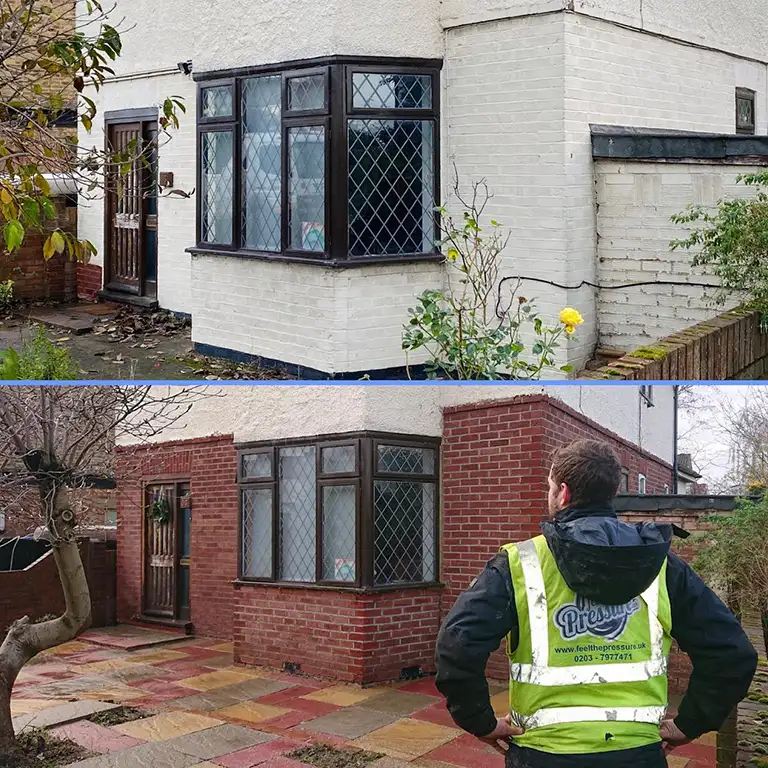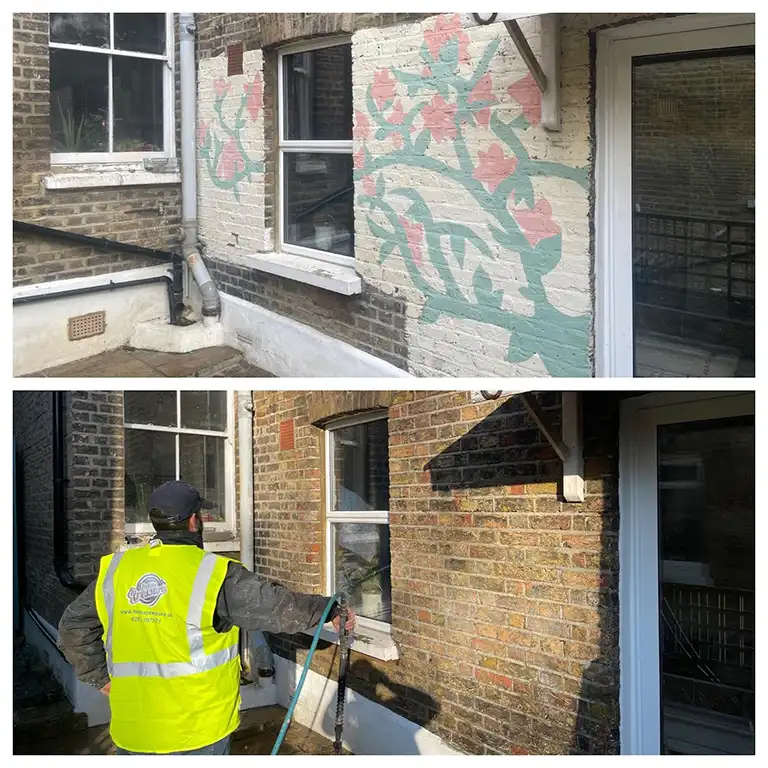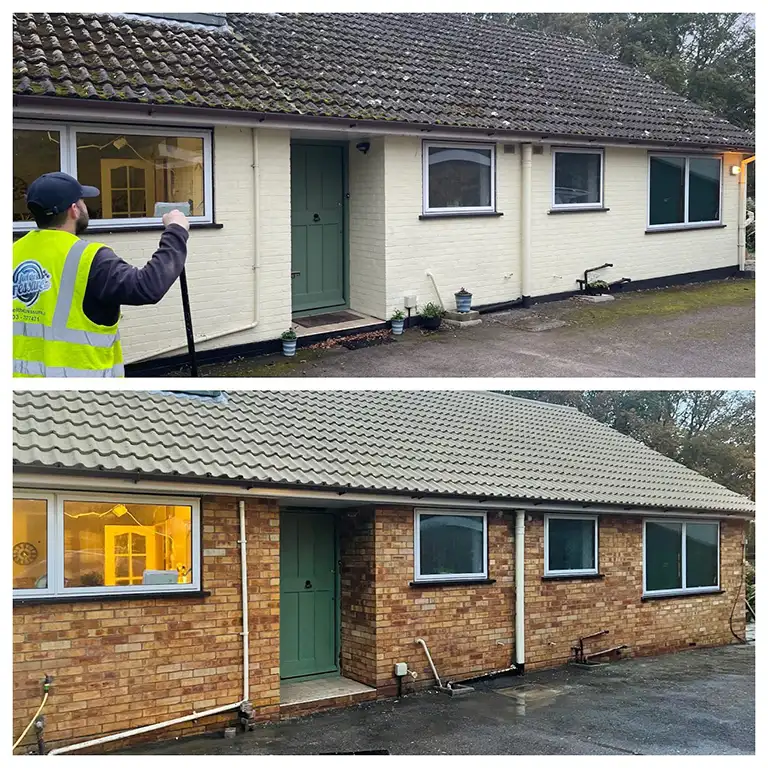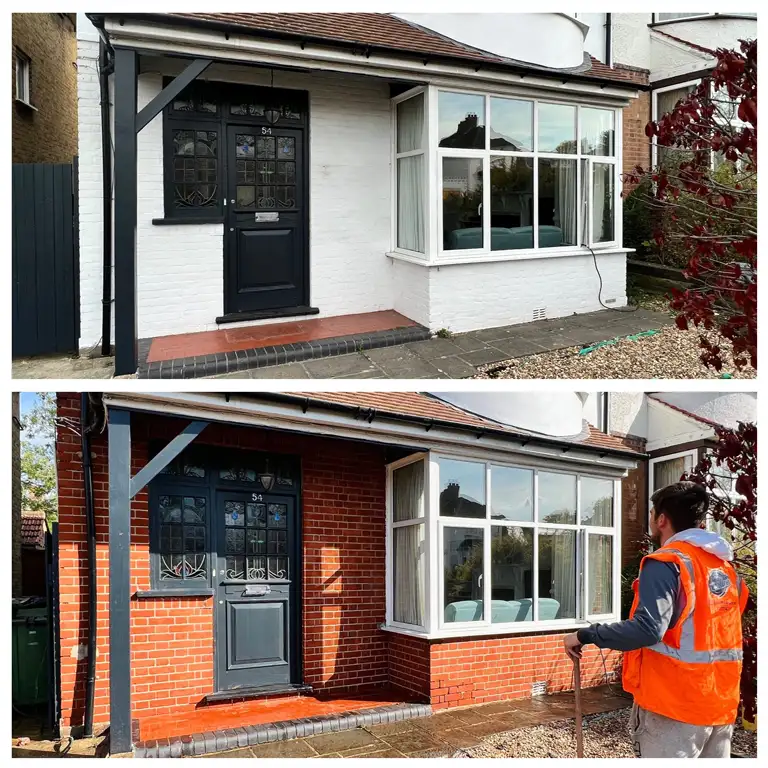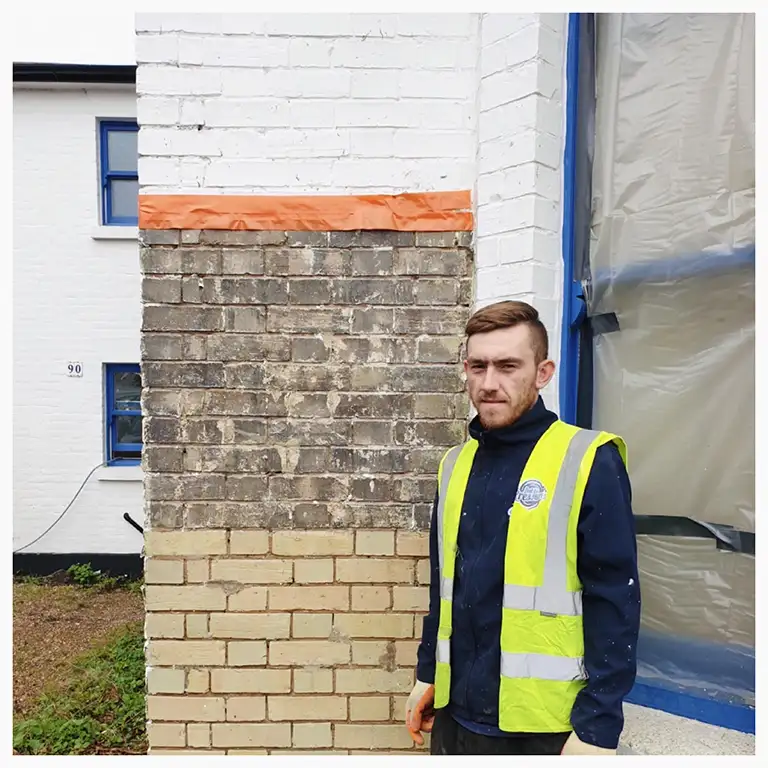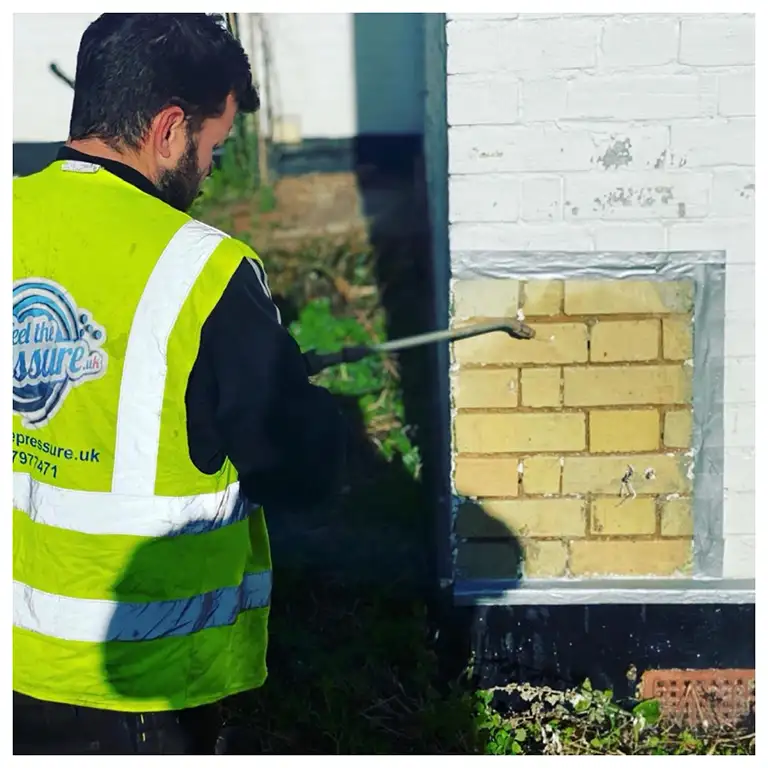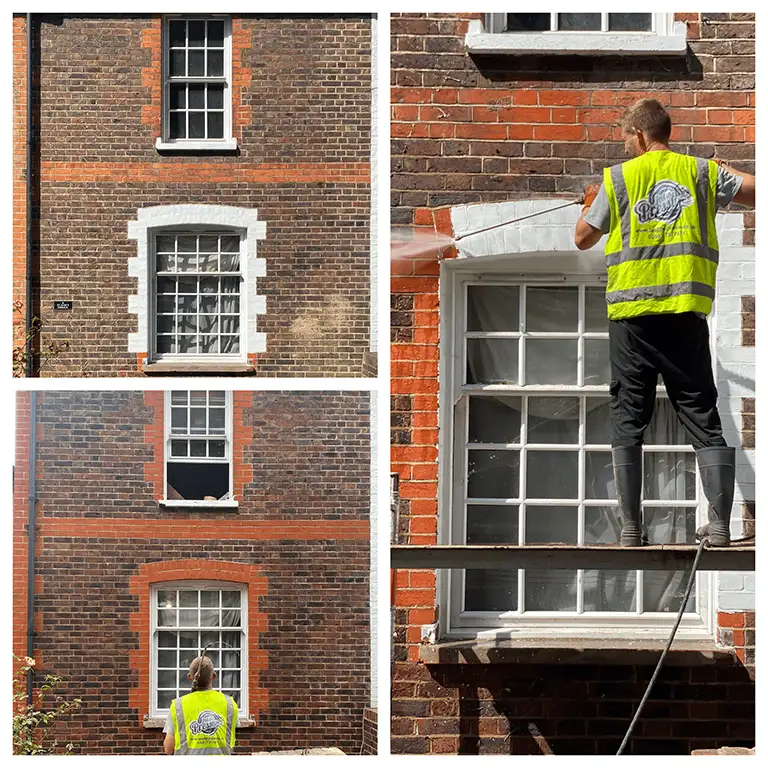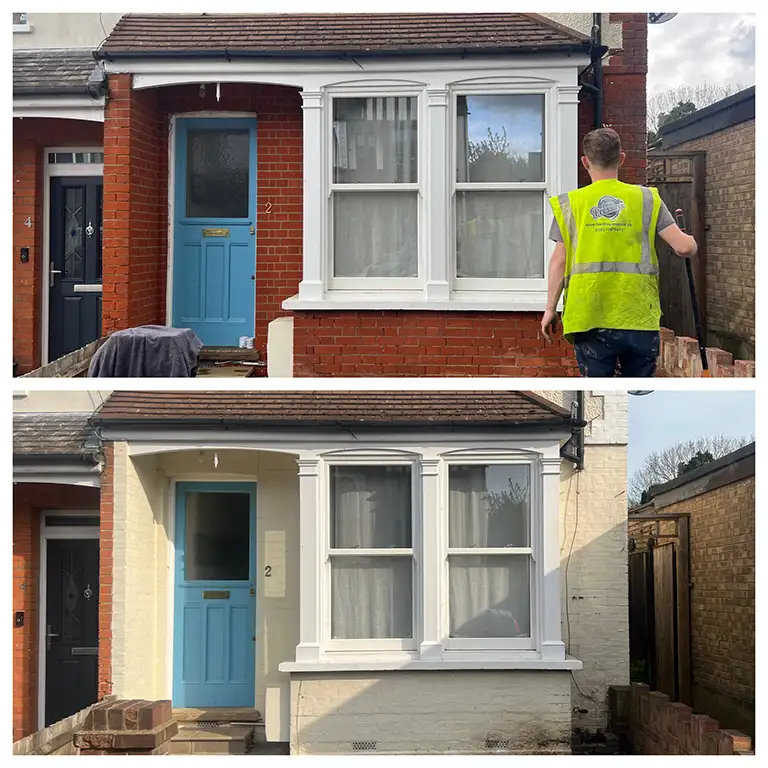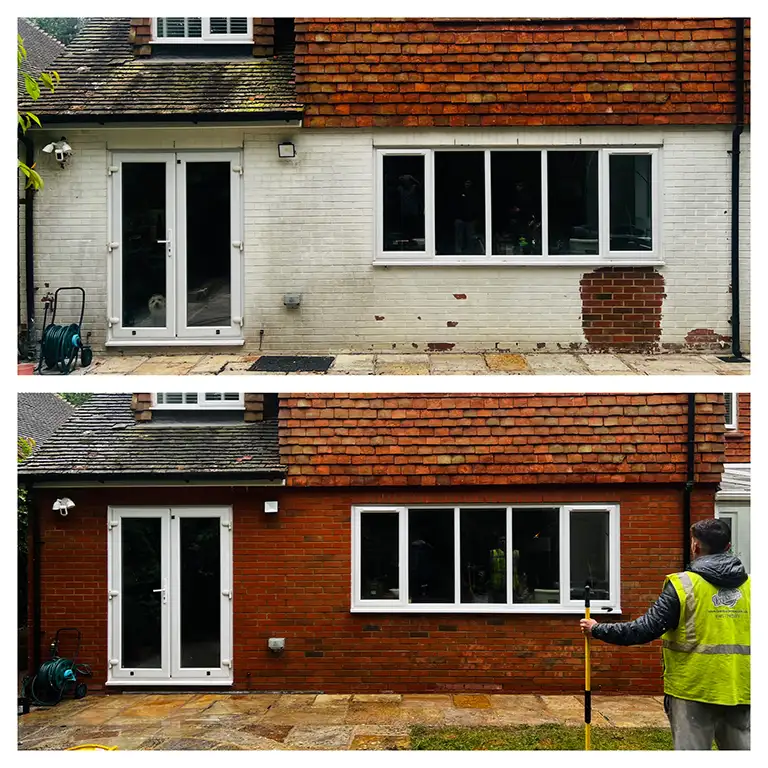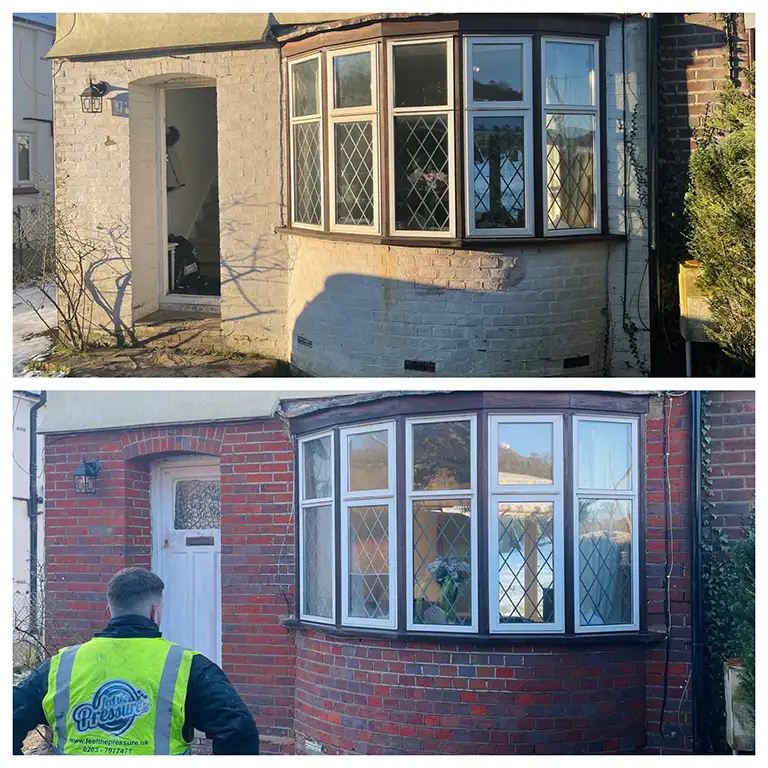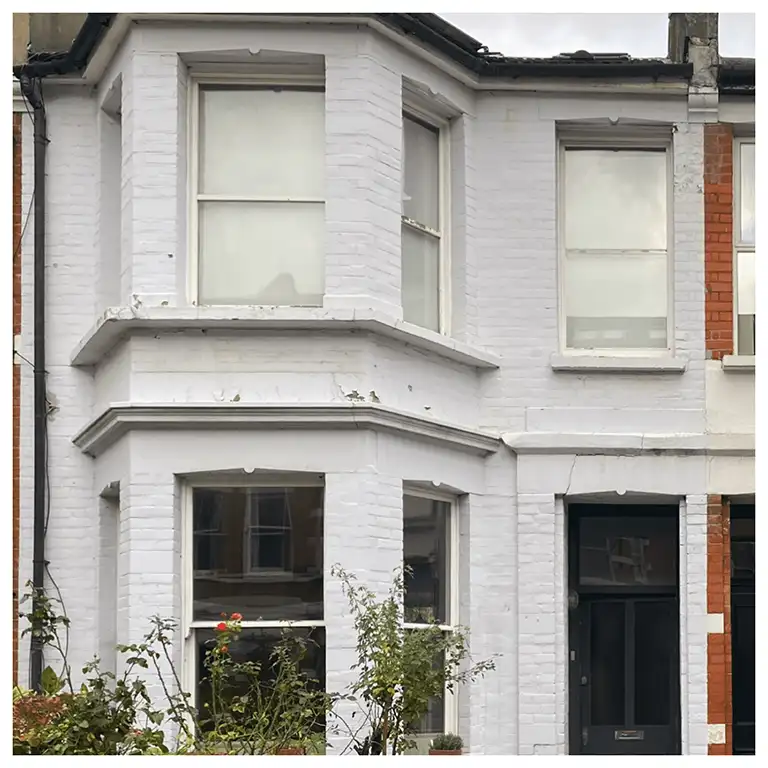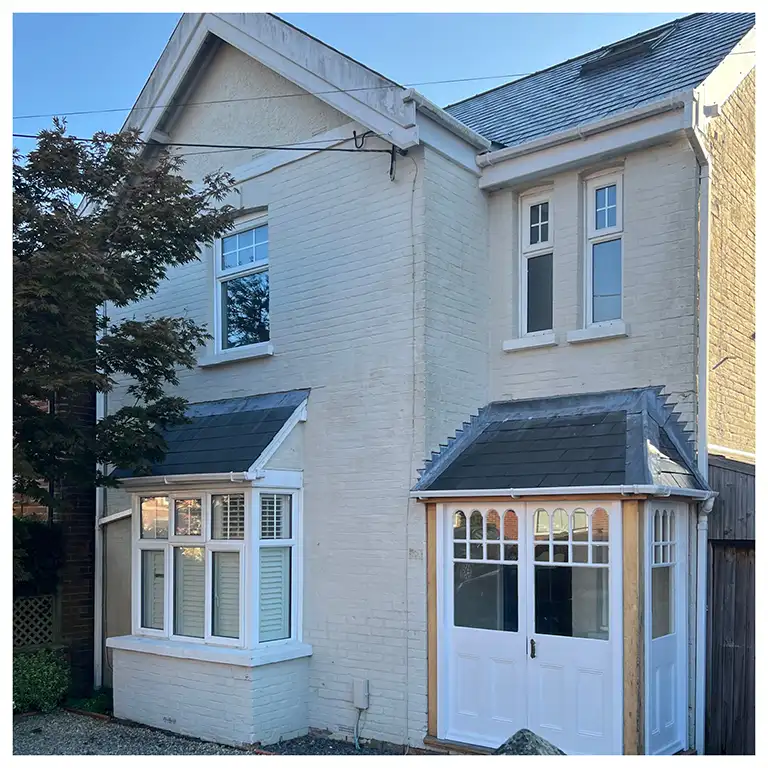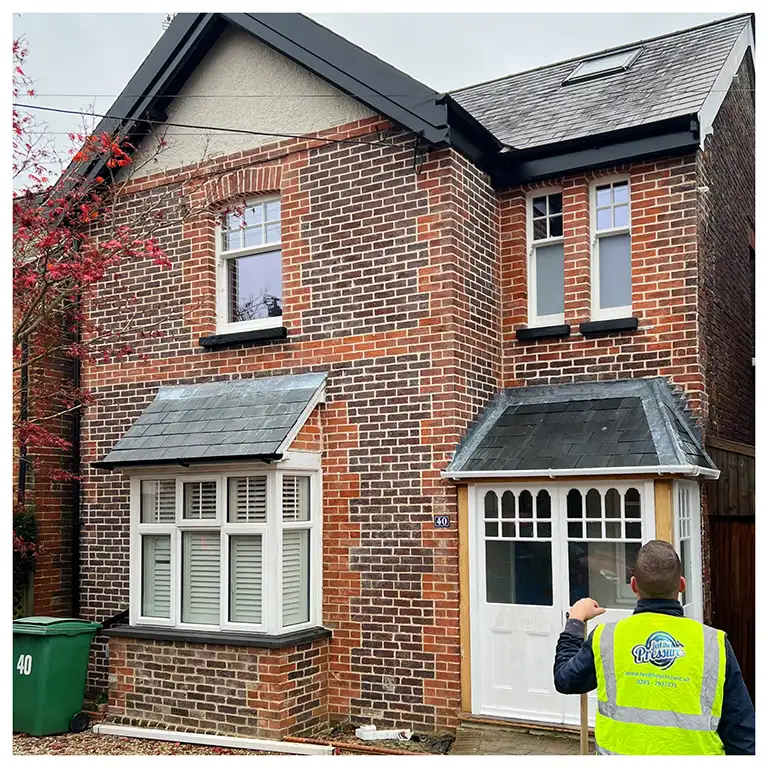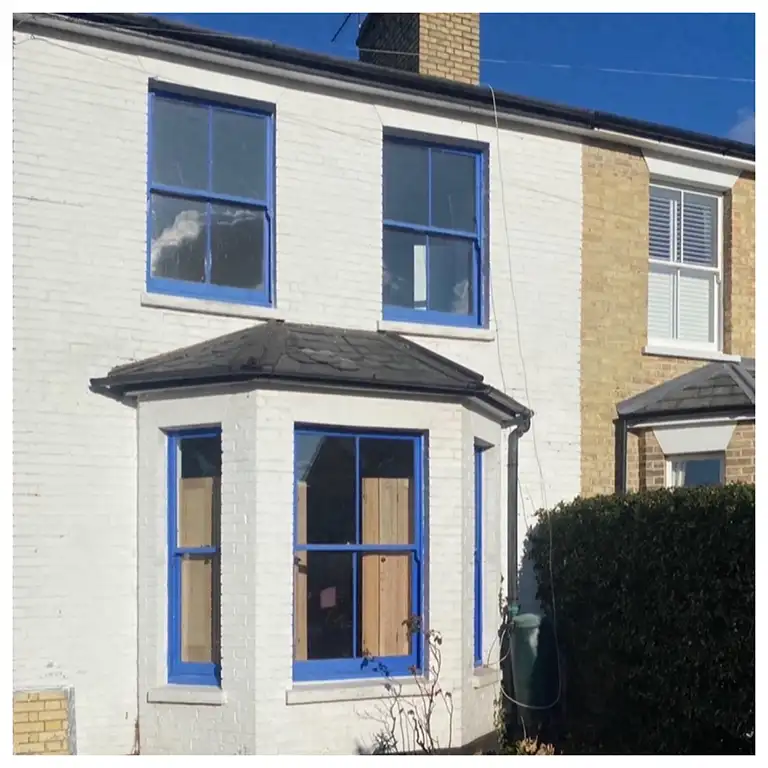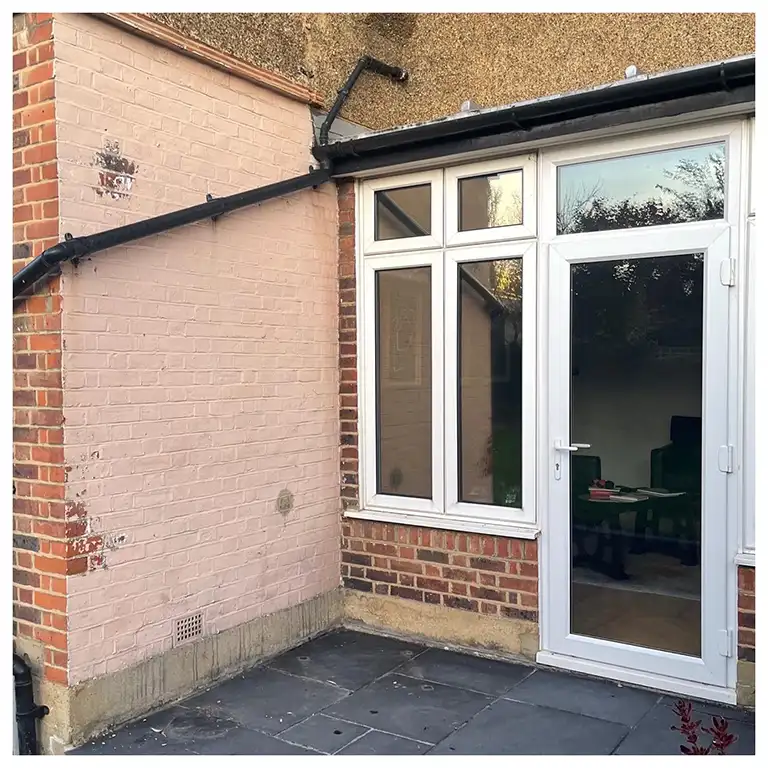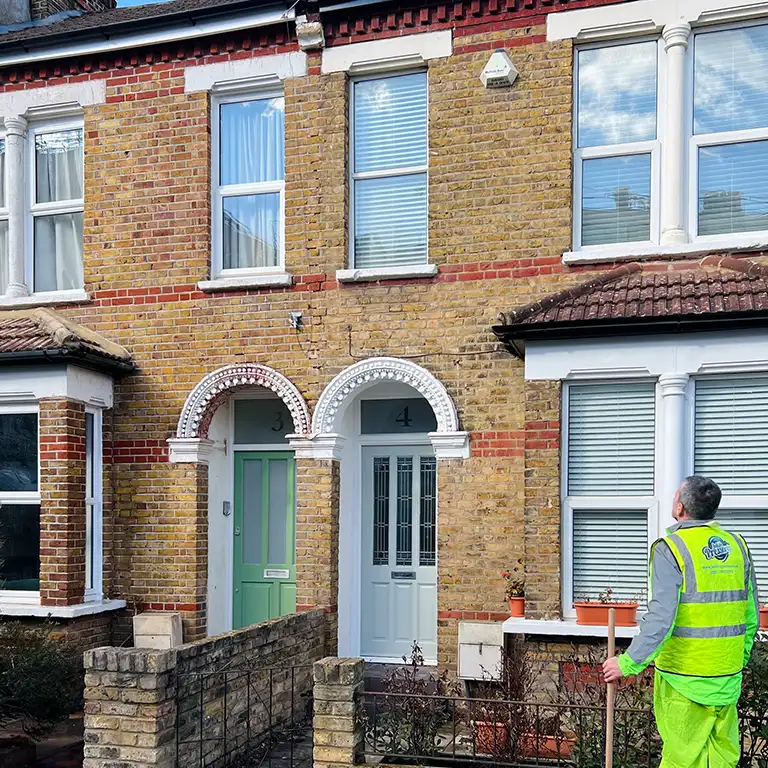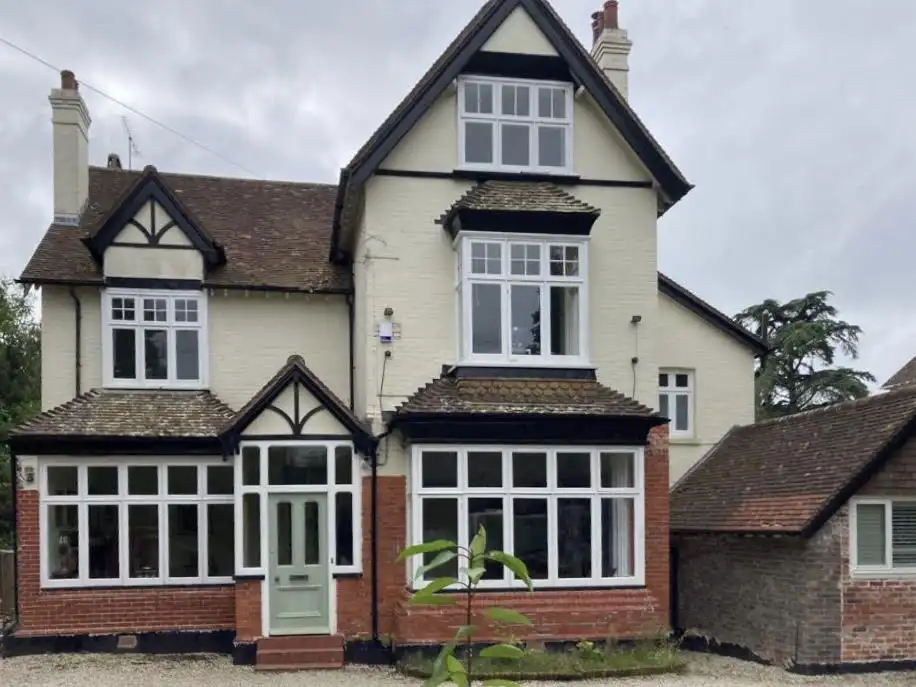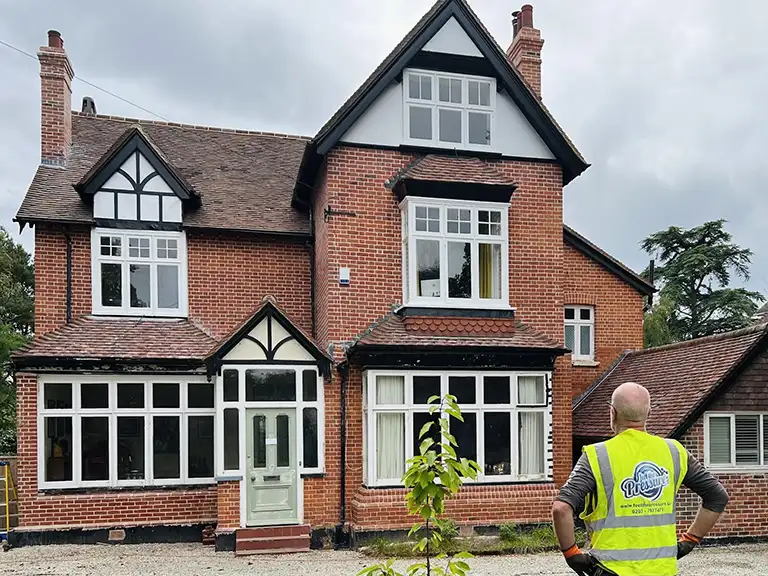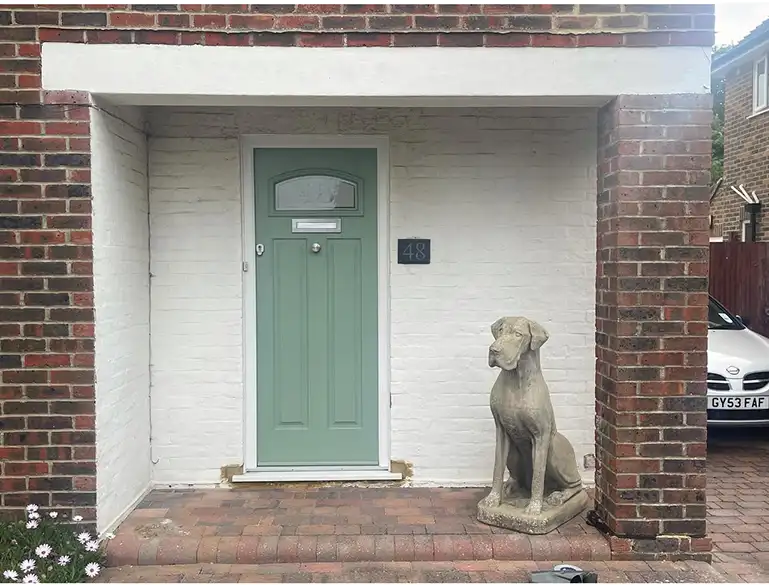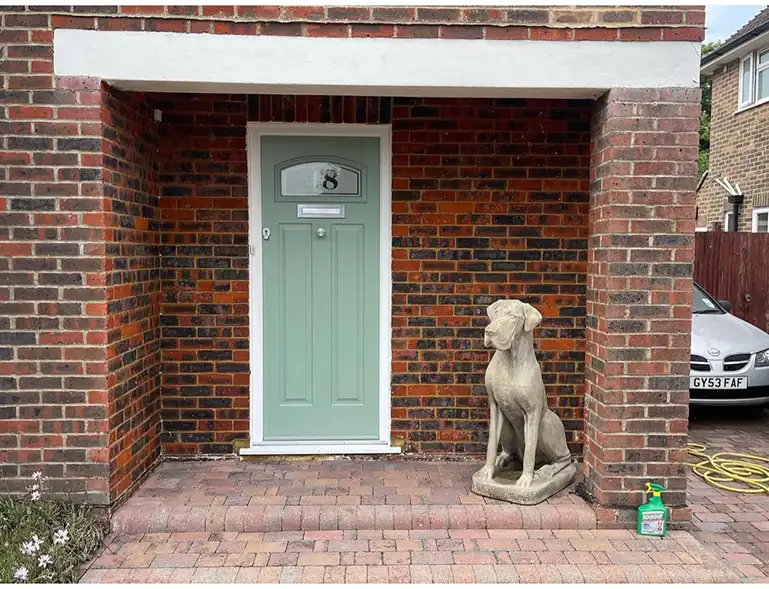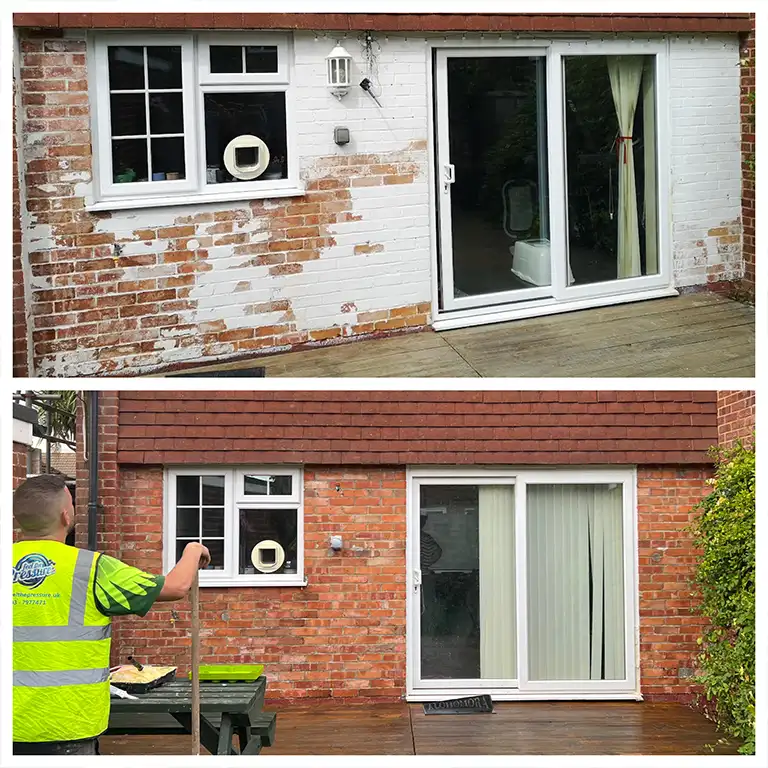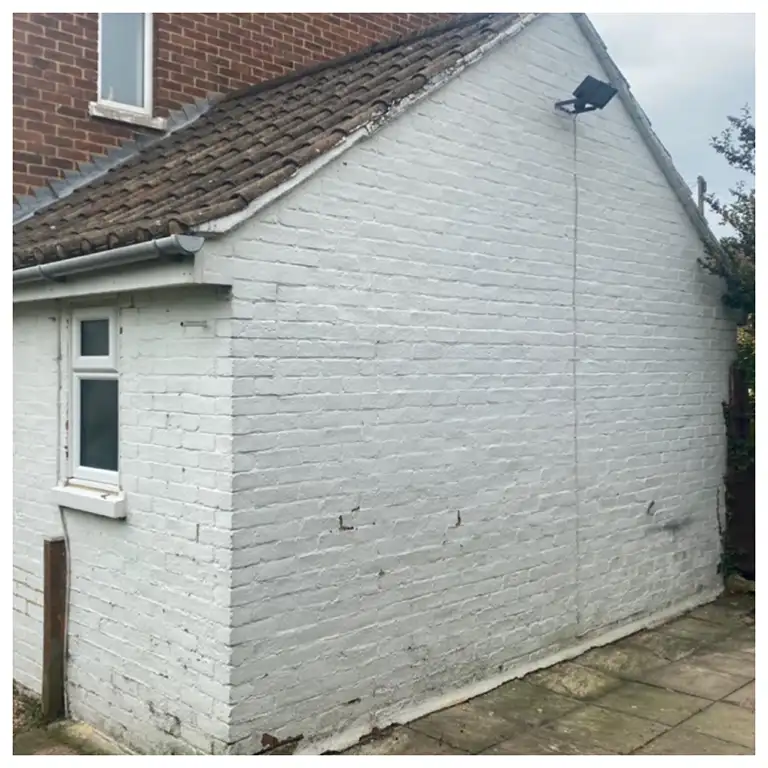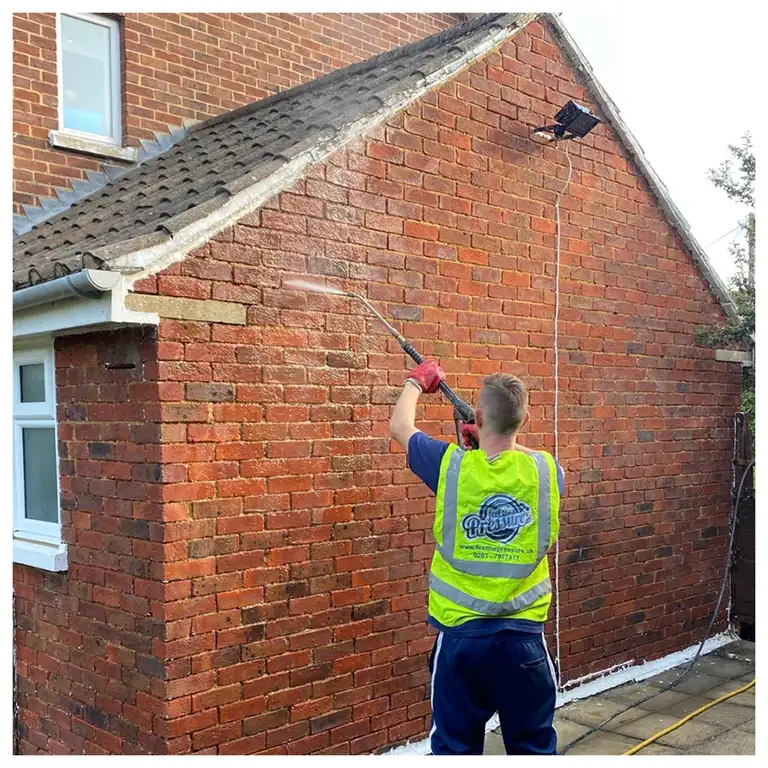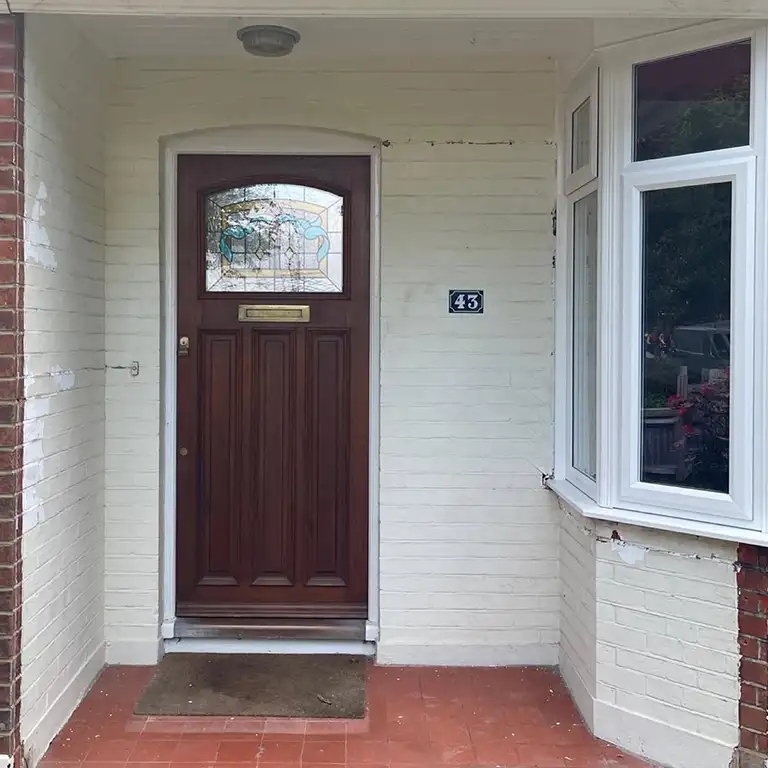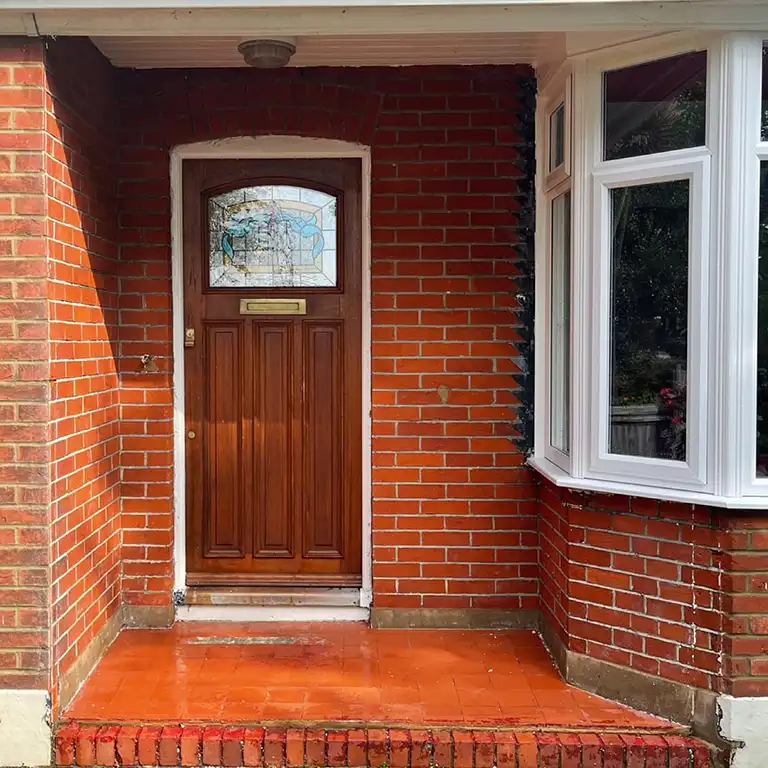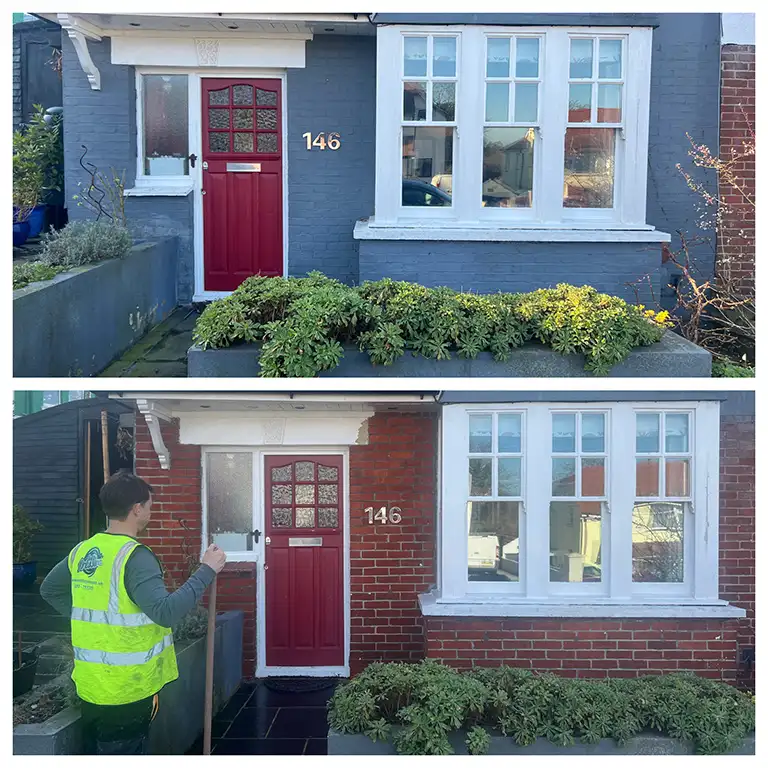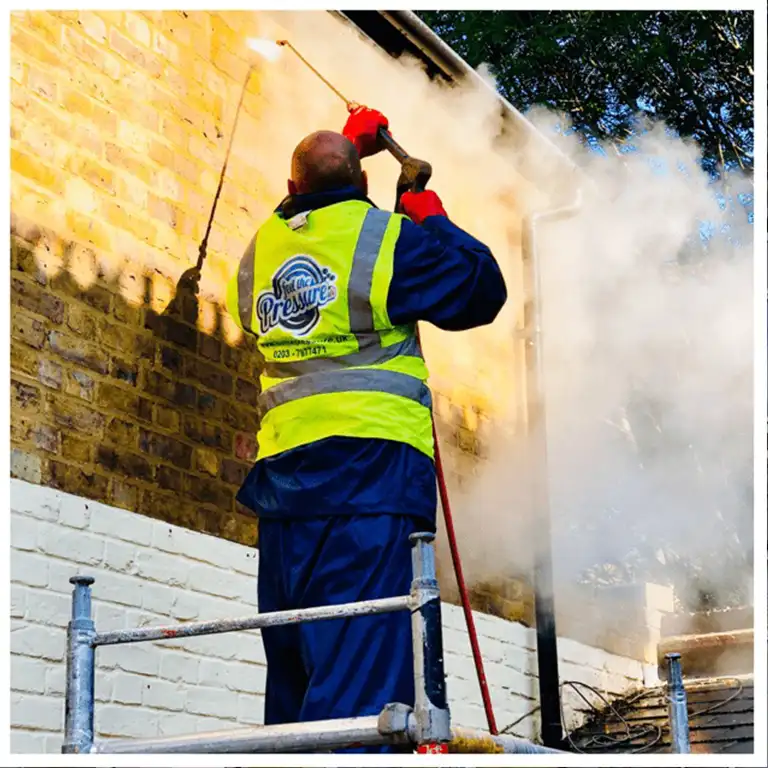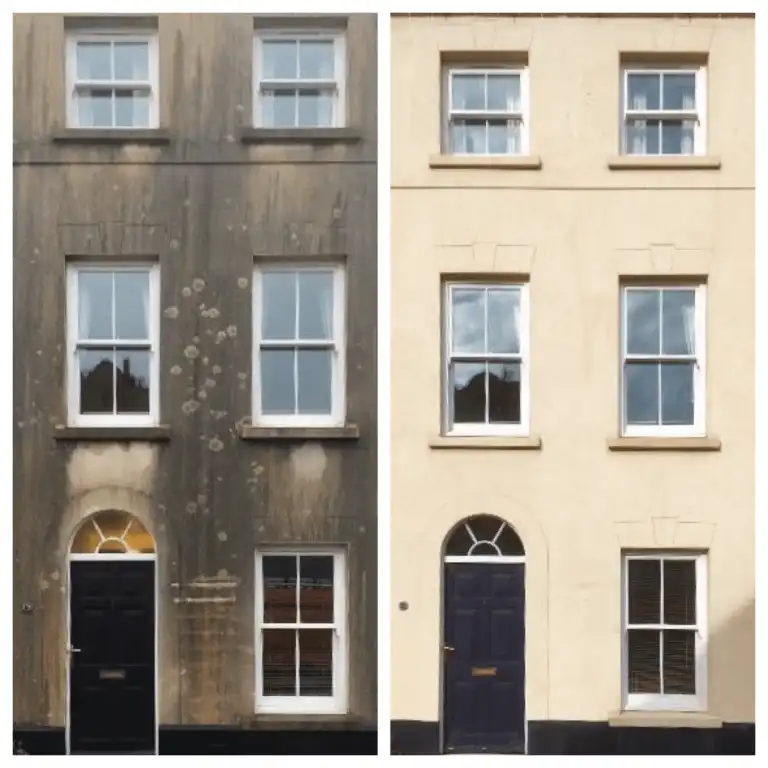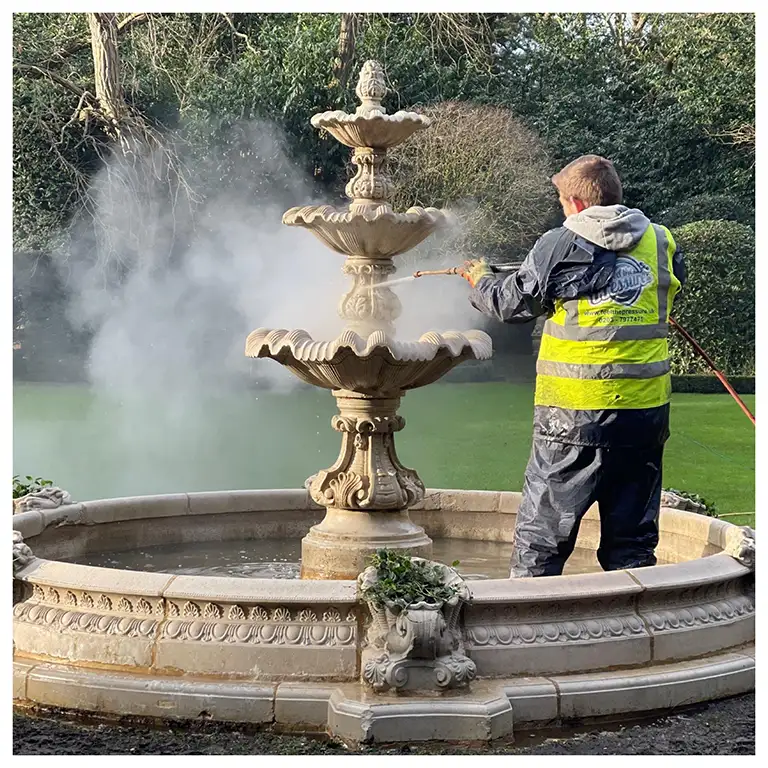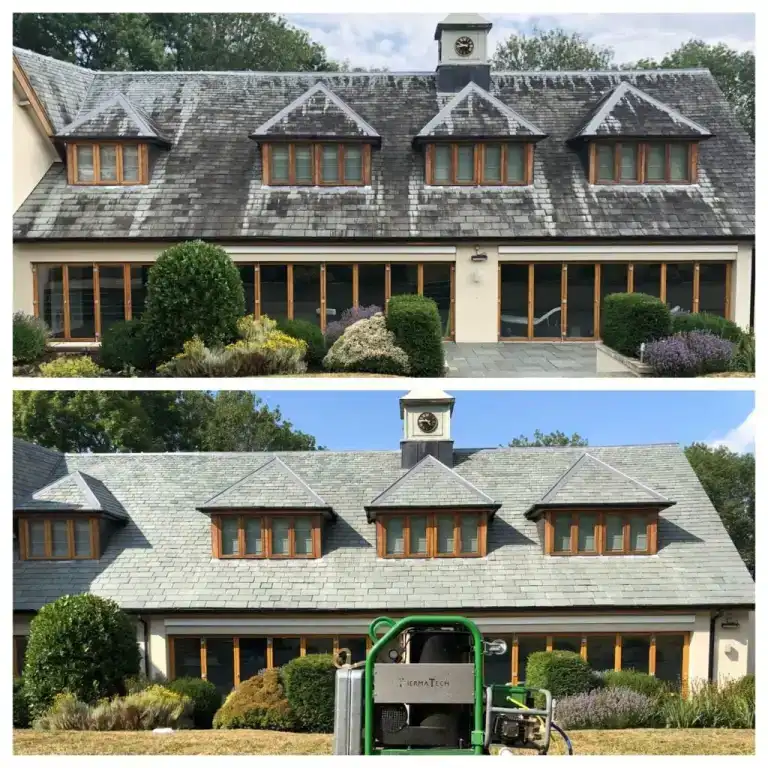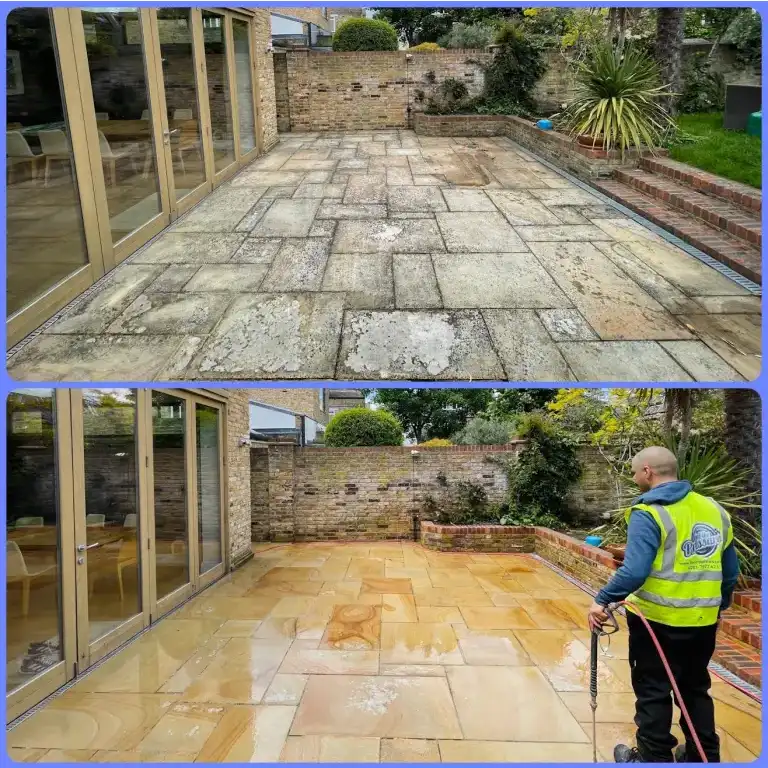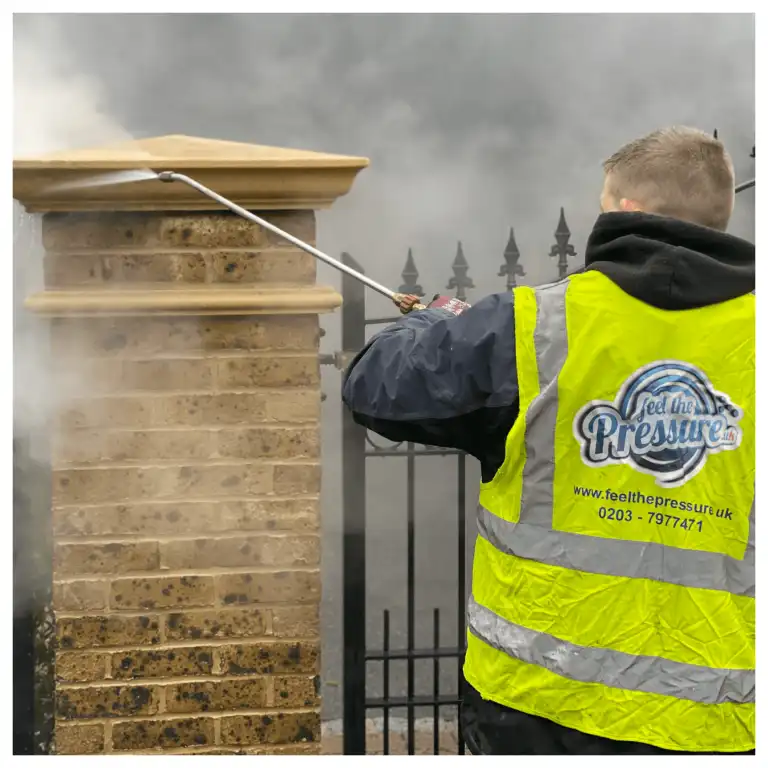Every project begins with precision and care — never guesswork. Here's my step-by-step brick paint removal process, designed to safely and effectively remove paint from brickwork without damaging the surface underneath.
1. Test Patch — See the Results First
We always begin with a free test patch so you can see exactly how the paint reacts. Whether you’re dealing with old masonry paint, modern coatings, or years of buildup, this first step shows how your bricks will respond — before you commit.
2. Property Protection & Setup
Before any removal work starts, we take time to protect your doors, windows, paving, and landscaping. This ensures a clean, professional job — with no overspray, splashing or mess left behind.
3. Paint Softener Application
For stubborn or non-breathable paints, we apply a specialist paint softener that helps break down the coating gently. It’s especially useful when removing paint from old brickwork that’s been painted multiple times.
4. DOFF Steam Paint Removal
We use DOFF steam cleaning — the best method to remove paint from brick safely. Superheated steam gently lifts paint from the surface without harming the brickwork underneath. It’s ideal for Victorian homes, listed buildings, and any property with delicate brick.
5. Final Clean — Streak-Free, Tidy & Breathable
Once the paint has been fully removed, we rinse down all surfaces and leave the brickwork clean, streak-free, and ready to breathe again. I also tidy up the surrounding area so nothing’s left out of place — just clean, natural-looking brick.
This is the final stage of the brick paint removal process for most properties.
6. Optional Brick Cleaning (For Carbon or Deep Staining)
If your brickwork has heavy black carbon staining or deep-set pollution marks, we can carry out specialist brick cleaning after the paint has been removed. This step is optional and only recommended if needed — usually on older properties or homes exposed to traffic fumes or soot.
Ideal for period properties across London and the South East, where carbon build-up is common on exposed brickwork.


